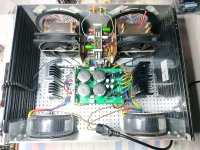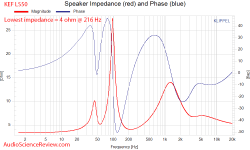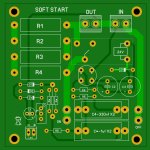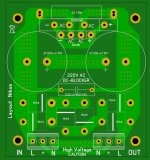Hi Andy how are you doing?
A small question. Will you stay with 2.2A current in your amplifier? It has no negative impact in relation to a higher, let's say 2.6 or 2.8 Α .? Is it enough to drive 4 ohm speakers etc?
Thanks.
Yassou, Nikos.
I think with the 0.15R Source resistors ... it's actually 2.5a. But, yes, I (and I think Hugh) feel that it has had no negative impact, compared to the 3a which the original 0.12R source resistors delivered.
The amps drive my 4 ohms spkrs wonderfully! 👍
And it has reduced the heat input (from my 2x stereo amps) into the room - from 500w to 400w.
Thank you for the answer.For me with a resistance of 0.15Ω it gives me exactly 2.25A.In contrast, we are having some severely chill weather here - so my AN4Rs are making the temperature in my listening room a lot more friendly. 🙂
Thank you for the answer. For me with a resistance of 0.15Ω it gives me exactly 2.25A.
That is extremely interesting, Nikos. 👍
My voltage measurement across the two Source resistors - divided by 0.3ohms ... delivers ~2.5a!
I run the same bias on my AN39 with KEF LS50's : no shortage of beans, but I do have a small listening room. Context is everything....Thank you for the answer.For me with a resistance of 0.15Ω it gives me exactly 2.25A.
Spiros,
You might notice your and Andy's source resistors give different quiescent current on the output stage of the AN.
This is because of tolerances in the beta (hfe) of the sensing resistor, the BD140.
The base current for this transistor passes through a 1k resistor, which drops a small amount of voltage, typically 100mV.
But it varies with hfe; if hfe is a low 40, the drop is 8/40 x 1 = 200mV, but if hfe is 120, the drop is 8/120 x 1 = 67mV.
When you examine the BD140 datasheet you see hfe varies from 63 to 160 with more variation from manufacturers.
So, when you use a BD140 you could find wide variations of beta and this shows up with the relationship between the source resistors and the quiescent in the output stage.
To add to the confusion, as the temperature of the BD140 increases its beta increases, reducing the current through the output stage. This is a great advantage; negative temperature coefficient, it keeps the output stage stable, avoiding thermal runaway.
HD
You might notice your and Andy's source resistors give different quiescent current on the output stage of the AN.
This is because of tolerances in the beta (hfe) of the sensing resistor, the BD140.
The base current for this transistor passes through a 1k resistor, which drops a small amount of voltage, typically 100mV.
But it varies with hfe; if hfe is a low 40, the drop is 8/40 x 1 = 200mV, but if hfe is 120, the drop is 8/120 x 1 = 67mV.
When you examine the BD140 datasheet you see hfe varies from 63 to 160 with more variation from manufacturers.
So, when you use a BD140 you could find wide variations of beta and this shows up with the relationship between the source resistors and the quiescent in the output stage.
To add to the confusion, as the temperature of the BD140 increases its beta increases, reducing the current through the output stage. This is a great advantage; negative temperature coefficient, it keeps the output stage stable, avoiding thermal runaway.
HD
Very definitely 4Ohm!
Here you go with impedance measurement done by audiosciencereview.com for the KEF LS50 from 2020.
Attachments
Very definitely 4Ohm!
Here you go with impedance measurement done by audiosciencereview.com for the KEF LS50 from 2020.
That's a pretty wicked plot! 🙁
I hope you built the AN4R - rather than the 8R.
When you examine the BD140 datasheet you see hfe varies from 63 to 160 with more variation from manufacturers.
How very interesting, Hugh. I had thought it was just jfet specs that were widely varying - but ordinary transistors are, too. 😵
Just as well I match Hfe (for L&R channels) on all the transistors I use for the 'Paris' headamp and my 'Muse' phono stage - as well as Idss for the jfets! 👍
To add to the confusion, as the temperature of the BD140 increases its beta increases, reducing the current through the output stage. This is a great advantage; negative temperature coefficient, it keeps the output stage stable, avoiding thermal runaway.
Indeed - an excellent attribute of the venerable BD140! 🙂
The only thing needed is a soft start board and maybe one dc blocker ....I'm waiting also a couple output conectors .That's how I found the time for some measurements now that everything is in a box. The measurements are without load.
40khz 10khz 1khz square signal.
If my old scope measure correctly i have 40V p-p 1khz sine signal before clip.
I haven't heard him yet with both channels working. I let the anticipation grow.....
40khz 10khz 1khz square signal.
If my old scope measure correctly i have 40V p-p 1khz sine signal before clip.
I haven't heard him yet with both channels working. I let the anticipation grow.....
Attachments
-
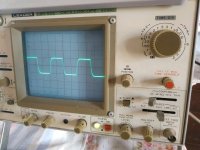 IMG_20240721_154044.jpg425.7 KB · Views: 101
IMG_20240721_154044.jpg425.7 KB · Views: 101 -
 IMG_20240721_154014.jpg332.6 KB · Views: 92
IMG_20240721_154014.jpg332.6 KB · Views: 92 -
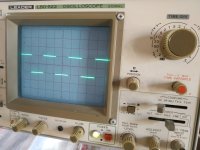 IMG_20240721_154001.jpg336.2 KB · Views: 87
IMG_20240721_154001.jpg336.2 KB · Views: 87 -
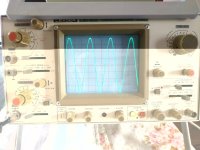 IMG_20240721_154443.jpg312.2 KB · Views: 103
IMG_20240721_154443.jpg312.2 KB · Views: 103 -
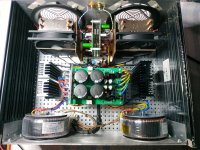 IMG_20240720_221506.jpg617 KB · Views: 100
IMG_20240720_221506.jpg617 KB · Views: 100 -
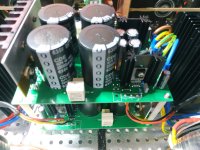 IMG_20240720_221251.jpg420.4 KB · Views: 100
IMG_20240720_221251.jpg420.4 KB · Views: 100 -
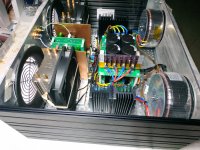 IMG_20240720_221221.jpg557.8 KB · Views: 100
IMG_20240720_221221.jpg557.8 KB · Views: 100 -
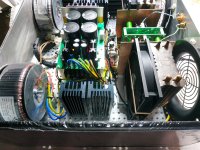 IMG_20240720_221205.jpg589.4 KB · Views: 103
IMG_20240720_221205.jpg589.4 KB · Views: 103
Last edited:
Soft start for a switch with led 24V and a simple DC Blocker ... .
Attachments
Last edited:
Μimemsis is a cold and characterless sound, you need the right amount of distortion, ask Hugh he will explain it well.
Thank you.ask Hugh he will explain it well.
Very interesting......I'm assuming you don't have the skills to explain it yourself, and you're asking for this?
- Home
- Amplifiers
- Solid State
- Alpha Nirvana 39w 8ohm Class A Amp
